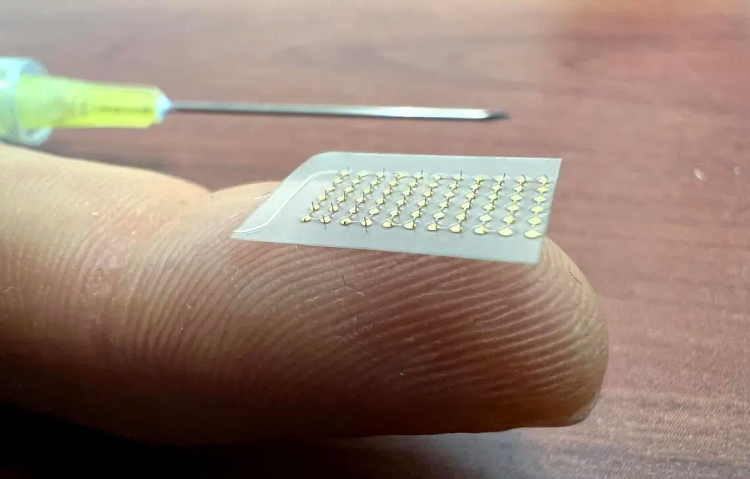Kazim Haider knows how challenging it can be for people with diabetes to continually monitor their glucose levels.
The Schulich School of Engineering doctoral student remembers the challenges his father, who had the condition, faced over many years with the constant demand of keeping blood sugar in check while balancing a busy family and professional life.
After his father suffered a major heart attack due to diabetes-related complications and lengthy hospitalization, Haider wanted to make a difference for families like his.
Armed with his fascination of micro- and nanotechnology, he pursued the emerging frontier of microneedle-based biosensors.
"Miniaturized wearable health-monitoring devices have the potential to change how painful, time and resource-consuming, and sometimes inaccessible regular testing can be," says Haider, BSc (Eng)'21, MSc'24. "They can transform painful and inconvenient routines with seamless tools that empower people to take control of their health and their lives."
Working under the supervision of Dr. Colin Dalton, PhD, Haider's work on developing a low-cost, pain-free glucose-monitoring patch has earned him several accolades including the prestigious Vanier Canada Graduate Scholarship and the Killam Doctoral Award.
Addressing a growing global health challenge
According to the World Health Organization, nearly 830 million people live with diabetes.
For most people, the standard method for monitoring blood sugar is the finger-prick test, where the individual punctures their skin, squeezes out a drop of blood and measures it on a test strip with a handheld glucose meter.
"This is done multiple times a day and is painful, disruptive and, for many, embarrassing to do in public," Haider says. "Self-consciousness is one of the leading reasons people with diabetes skip checks, even though regular blood sugar-monitoring is vital to avoid long-term complications."
While the development of continuous glucose monitors (CGMs) has provided an alternative, he says they aren't perfect, as a needle sensor still needs to be inserted and the monitors need regular replacement, which becomes expensive.
Haider believes microneedles, thinner than a human hair and less than a millimetre long, could be the breakthrough patients have been waiting for. Unlike hypodermic needles, they only penetrate the top layers of skin, where there are no pain receptors, making them virtually painless while still enabling accurate readings.

Photo Courtesy Kazim Haider
Engineering a health solution
What sets Haider's work apart is how the microneedle patches are made.
During his master's degree, he co-patented a novel fabrication process that adapts the techniques used to manufacture silicon computer chips for microneedle fabrication. The process is fully automated, additive and scalable, meaning microneedles can be produced faster, cheaper and more reliably than ever before.
Now, as part of his PhD studies, Haider is applying this technique to create microneedle biosensors for glucose monitoring.
Each patch costs about $2 and can work for people of all ages, while addressing the issues around "needlephobia," which affects one in 10 people globally, especially children.
Haider says the microneedles act like tiny electrical probes, which can be easily modified to detect other biomarkers for conditions like kidney or heart disease.
"While glucose is our starting point, the real promise is a platform technology that can expand to many conditions."
He cites a Vincent van Gogh quote when talking about microneedles: "Great things are done by a series of small things brought together."
Adds Haider: "A single microneedle is almost invisible to the naked eye. When you bring hundreds together on a wearable patch, you can create a powerful tool that can generate life-changing information for managing conditions like diabetes."
Haider says he would ultimately like to create an effective, user-friendly technology to accurately sense glucose that can be widely adopted, improving diabetes care by making glucose monitoring more comfortable and accessible for all.













